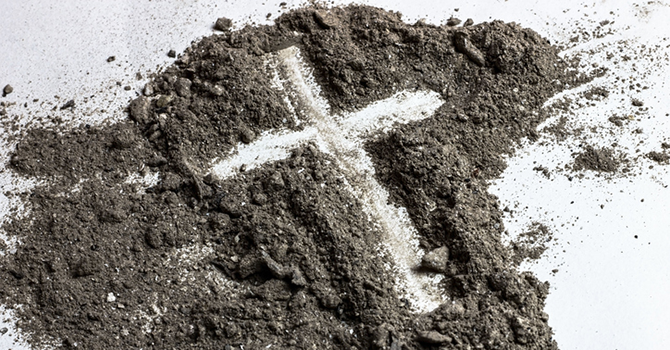Not long before her death in 2016, I visited my Aunt Marge in her room at the nursing home in Tulia, Texas. Her television was tuned, as always, to a channel playing canceled shows on an endless loop. She greeted me, as always, with a drawled “Hello, darlin’.”
I knew my part, too, as I replied, “Hey, Marge, whatcha’ doin’?”
That day her answer made me laugh. My aunt told me she was just doing her Bible study and watching “Murder, She Wrote.” Why hadn’t I thought of that perfect combo: a show about people dropping dead all over a small town -- strangled and shot and beaten and poisoned -- and a book in which people also drop dead at an alarming rate, though on a larger geographic scale and often in more imaginative ways. Turned into a pillar of salt? Tent peg pounded through the skull? Anyone?
Aunt Marge recognized no divisions of high and low culture, with Judge Deborah in one camp and Jessica Fletcher in the other, because the Bible was part of everything she thought and did. She had memorized Bible verses and Bible jokes and Bible songs and Bible trivia, and she thumbed through her Bible looking for guidance in all things, from the everyday to the eternal.
I’m thinking of that visit with Aunt Marge this Ash Wednesday, because of a similar set of incongruities, a kind of high-low culture merge present in the sign of the day, a cross, smeared on our skin with the material of the day, ashes. The cross is lifted high and exalted. It is, as the motto of the Congregation of Holy Cross priests who staff my parish puts it, Our Only Hope. We kneel to kiss the cross on Good Friday. We sing of it. We place the cross in the slack hands of our dead. We paint and carve it on our church walls and doors and steeples. We trace the cross with oil and water on the bodies of the baptized and confirmed. We wear it around our necks. The cross is the symbol by which we are first and finally known.
But ashes? “You’re covered in soot” is not a compliment. Indeed, a murmured “You’ve got something on your face” is what the Ash Wednesday-goer is likely to hear as she walks back into the marketplace. It’s awkward, pushing a cart through Target with what fellow shoppers register as a dirty forehead.
We sweep ashes up. We discard them. Ashes are trash, a nuisance, something to be washed away, brushed off and shaken out. “Dust,” we hear, as the cross is marked in ashes on our skin, the skin we strive daily to keep clean.
And then, the shock of what follows: “Remember that you are dust, and to dust you will return.” We are marked with what we are.
I understand being marked with a cross. I like being marked with a cross. I do it daily when I sign myself before prayer, when I dip my fingers into the small font of holy water by the door leading out to my garage. I depart by the sign of the cross and return by the sign of the cross. It’s the ashes I wonder about. I’m told they are the mark of the penitent, but no penitent leaves the confessional with a smudged face.
I’ve come the long way and a hard way to think that the ashes are about the bone-deep reality behind the skin-deep veneer -- the truth, once the varnishes of various kinds are sanded away. The truth, whether we see it or understand it or repent before it. It is awkward, pushing a cart through Target on Ash Wednesday with a grimy face just under the coiffed hair and just above the mascaraed lashes. And maybe that awkwardness gets me closer to some deep wisdom. The deep wisdom that we are marked with what we are. That we are marked with what we must become.
In “The Rite of Penance, Volume 3,” theologian Nathan Mitchell writes of the cross and the way Christians speak of having their sins absolved by it. He argues -- and this, I think, is far more difficult for us to accept -- that the cross is also where our illusions of righteousness are wiped away:
“God’s act of reconciliation in Christ … liberates people not only from failure and guilt but also from the suffocating goodness and virtue through which we attempt to earn salvation.”
The cross is where all that we clutch in our closed fists is carried away on a tide of mercy beyond imagining, beyond possibility, beyond our feeble ability to hope. We are washed on the tide of mercy until it carries us back, where we began, back to the cross. We stand, stripped bare as on the day of our birth. We have no other choice there, for neither committed sin nor confected virtue can stand on that ground. We will come naked to the cross if we come at all. We will come, our bodies soiled and scarred, shorn of pretense and defense and charade. Shed of all our rags, both the rags of our sins and the rags of our righteousness.
Perhaps that nakedness, into which we are invited and into which we enter, looks like the ashes from which God fashioned us, the ashes into which God breathed the breath of life and we became. Perhaps that nakedness looks like the ashes to which we will return when we sleep and, sleeping, await in hope the rising day.









